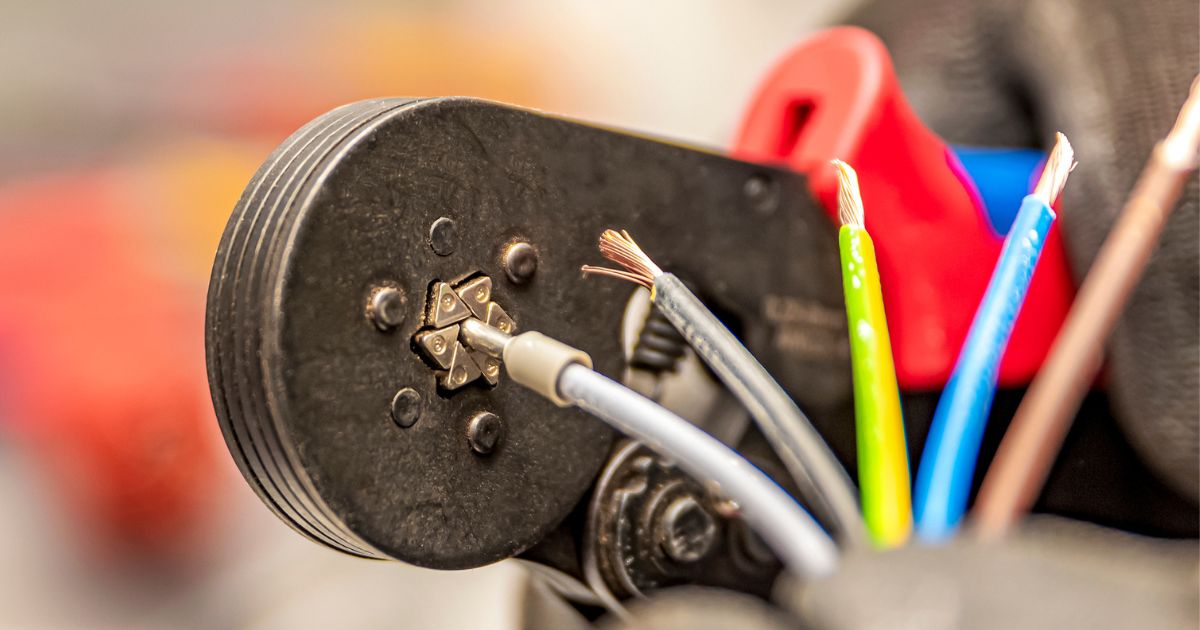Avoid These 5 Common Mistakes When Crimping Wires
Crimping wires is an essential skill for electricians. Whether building a new electrical system or repairing an existing one, making a secure connection is critical for safety and functionality. However, even the most seasoned professionals can sometimes make mistakes that lead to compromised connections. Recognizing and avoiding these common mistakes when crimping wires will ensure quality work and secure connections.
Insufficient Wire Stripping
The first step to a successful crimp is properly stripping the insulation from the wire. When an electrician strips too little, it can lead to poor conductivity, overheating, or even a short circuit. Conversely, stripping too much insulation can expose too great a length of wire, risking a loose connection or, worse, an unintended grounding, resulting in a safety hazard.
Use a wire stripper tool that matches the wire gauge to correctly strip wires. Strip the insulation cleanly without damaging the underlying wire strands. Note that proper wire handling requires electricians to know whether to twist wires before or after crimping and how to preserve the integrity and flexibility of the wire strands.
Incorrect Crimp Tool Selection
Choosing the right crimping tool for the job is crucial. If the tool’s gauge does not match the wire, it’s likely to deform the crimp, leading to a weak connection. In the case of battery terminals and high-amperage wires, a hydraulic crimper may be necessary to generate the force required for a secure crimp. Avoid the temptation to use a larger crimp tool with smaller wires. This mismatch can severely damage the wire, reducing its effectiveness and potentially causing a safety hazard.
Poor Crimp Technique
Crimping is an art as much as it is a science. It is critical to apply the right force uniformly across the crimp area. Overcrimping can cause the wire or connector to weaken, while undercrimping results in a loose connection that can overheat and arc. The proper technique involves securely positioning the wire and terminal in the crimping tool’s jaws and applying a smooth and powerful motion without jerking or repositioning the tool mid-crimp.
Neglecting Wire Inspection
Before you crimp, a visual inspection of the wire and terminal is necessary. Look for any signs of frayed strands, which can weaken conductivity and cause hot spots. Also, ensure no nicks or tears in the wire insulation, which could lead to a short or ground fault. Additionally, ensure the wire is correctly placed within the connector before crimping.
Lack of Proper Testing
The last of these common mistakes to avoid when crimping wires is neglecting quality testing. After crimping, always test for continuity to verify that the wire crimp is solid and secure. Continuity testing involves using a multimeter to check if an electrical path is complete between endpoints. Testing ensures that each crimped connection is reliable and that your electrical system will function safely and correctly.
In conclusion, understanding the importance of proper crimping and being aware of the potential pitfalls is key to maintaining safety and functionality in electrical work. Many of these mistakes result from carelessness and choosing the speed of crimping over quality. Quality and safety always come first with crimping and all electrical work.







